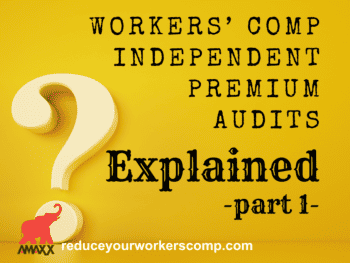
Ordinary Diseases and Work Comp
Before the COVID-19 pandemic, “ordinary diseases of life,” such as influenzas and colds, were not covered under workers’ compensation laws. The only exceptions were unique cases, such as an instance of a business executive who contracted Influenza-type B while traveling to Asia and developed severe bilateral staphylococcal pneumonia.[1] The employee filed a workers’ compensation claim, which the compensation judge awarded. The rationale for awarding benefits was based on evidence that the employee “became infected by a specific virus not present in the United States at that time. The compensation judge further found, having identified the virus that infected the employee and the origin of infection, that the employee’s resultant bronchiectasis arose from and the course of employment.”
The start of the COVID-19 pandemic in early 2020 led to a change in many state’s statutory frameworks. This change allowed employees who contracted COVID-19 to assert a claim and stator presumptions for various frontline workers.
What is Long COVID?
The medical community has now identified post-acute sequelae of SARS-CoV-2 infection (PASC) or long-COVID as a medical condition that is identified by several symptoms. These symptoms include, among other things, insomnia, fatigue, and shortness of breath. The long list of symptoms significantly impacts workers’ compensation programs, and efforts are now being made to provide additional legal protections for specified covered employees.
One current example is found in Senate Bill 431, which was recently introduced in Maryland. This legislation would allow impacted employees to be eligible for prolonged workers’ compensation benefits if passed into law.
Investigating and Handling Long-COVID Claims
Now is the time to prepare for possible statutory changes in workers’ compensation laws dealing with COVID-19 and the impact of “long COVID.” While the above legislation applies only to government employers, it goes without saying there will be efforts to expand the scope of such laws. Other jurisdictions will undoubtedly follow as well.
- Coordinate efforts to handle all COVID-19 claims within special claim teams or units. Use tools available internally, such as a medical director, peer review, and unit roundtables. Be sure to allow less experienced claim members to join these discussions to grow and develop new talent.
- Use outside legal resources. This is an excellent opportunity to exchange ideas with defense counsel. This can also be an opportunity to seek out attorneys for different firms and give them a chance to earn your team’s business.
- Educate all external stakeholders. While COVID-19 claims can be challenging, they can be used to work with interested stakeholders and employers to develop better claim programs. It can also be used to promote empathy within your workers’ compensation program to express empathy toward an employee suffering from COVID-19 effects.
- Promote wellness programs and return to work. Wellness programs and an emphasis on return to work can quickly implement tools to reduce workers’ compensation program costs. Wellness programs can assist with other comorbid conditions such as high blood pressure, diabetes, and substance abuse. Seek out opportunities to reduce the chance of deconditioning by making a solid effort to get people suffering from long-COVID back into the workforce.
These efforts should emphasize early reporting, responsiveness to requests for ongoing medical care, and complete claim investigations.
Conclusions
The COVID-19 worldwide pandemic is over, but workers’ compensation programs will continue to deal with its effects for decades to come – it may never go away. The ever-changing landscape in state legislatures demands that interested stakeholders continue to adapt and recognize the new standard created by COVID-19 and the possibility of ongoing statutory presumptions. Now is the time for claim teams to address this vital issue proactively with action and empathy.
[1] Olson v. Executive Travel MSP, 437 N.W.2d 645 (Minn. 1989).

Contact: mstack@reduceyourworkerscomp.com.
Workers’ Comp Roundup Blog: http://blog.reduceyourworkerscomp.com/
©2024 Amaxx LLC. All rights reserved under International Copyright Law.
Do not use this information without independent verification. All state laws vary. You should consult with your insurance broker, attorney, or qualified professional.

















